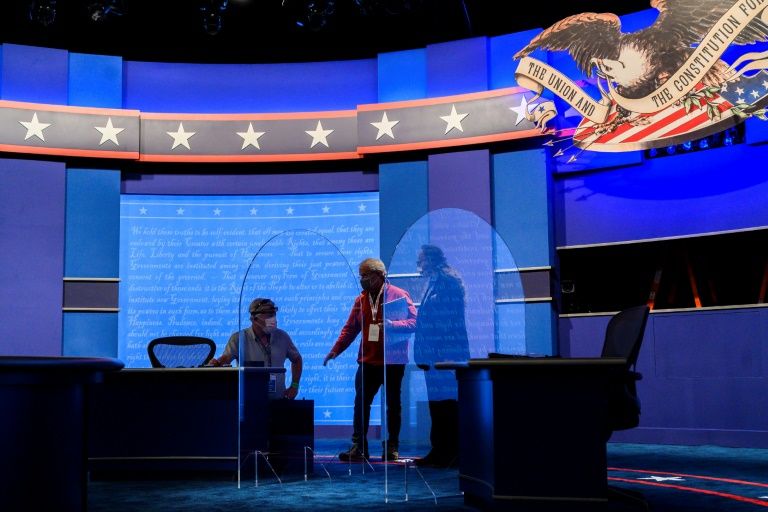Plexiglass at Pence-Harris debate won’t stop virus, warn experts
Since there has so far been no announcement on whether they will be wearing masks, the risk of spread is amplified.
Donald Milton, a professor of environmental and occupational health at the University of Maryland, told AFP: “With 12 feet (3.6 meters) of separation between the debaters, the plexiglass partitions will not provide added protection.
“The partitions are only useful for blocking sprayborne transmission of large drops and droplets,” he said.
“Aerosol particles will travel around the partitions easily and can even accumulate in invisible eddies behind the partitions making the situation worse, not better.”
At the start of the pandemic, the coronavirus was assumed to be driven mostly by bigger respiratory droplets, such as those emitted when we sneeze or cough.
These fall to the ground within seconds, generally within a distance of under six feet.
Since that time, multiple studies have shown smaller droplets emitted in normal speaking and breathing can be a mode of transmission too, and health authorities such as Centers for Disease Control and Prevention have updated their guidance.
These smaller droplets are generally less than a tenth of a millimeter in diameter, can remain suspended in the air from minutes to hours, and travel much further from their source on air currents.
SARS-CoV-2 isn’t as contagious as some other pathogens over long distances, such as the measles virus, but it can spread this way in the right circumstances, like prolonged time in an enclosed space.
The debate will take place at the University of Utah’s Kingsbury Hall, a high-ceilinged building from the 1930s.
– Box fans, duct tape and filters –
Jelena Srebric, a professor of mechanical engineering at the University of Maryland, explained that outside of hospitals and labs, air conditioning systems weren’t designed with pathogens in mind.
“What actually helps in large halls is the size of that volume and reduced occupancy, rather than the HVAC (heating, ventilation and air conditioning) system itself,” she told AFP.
But she added that an HVAC system’s ability to clean indoor air becomes less effective the longer people spend time in a place, as the pathogens expelled by an ill person would build up over time.
Milton and Srebric wrote a letter to the debate organizers urging them to buy mobile air filtration units that cost a few hundred dollars — or set up an even cheaper do-it-yourself solution involving box fans, High-efficiency particulate air filters (HEPA filters), and duct tape.
They tested a setup where two box fans with taped-on filters were placed on either side of a debater, with the air flowing in one direction.
One fan would waft filtered air toward them and the other would suck up their exhaled air and clean it, with the system reducing viral particles up to 50 percent.
But in all scenarios, the safest option would be for all participants to remain masked.
“Millions of Americans will see this debate and then think that you can protect yourself from aerosol transmission indoors by a plexiglass barrier,” tweeted Shelly Miller, a professor of environmental engineering at the University of Colorado Boulder.
Disclaimer: Validity of the above story is for 7 Days from original date of publishing. Source: AFP.


